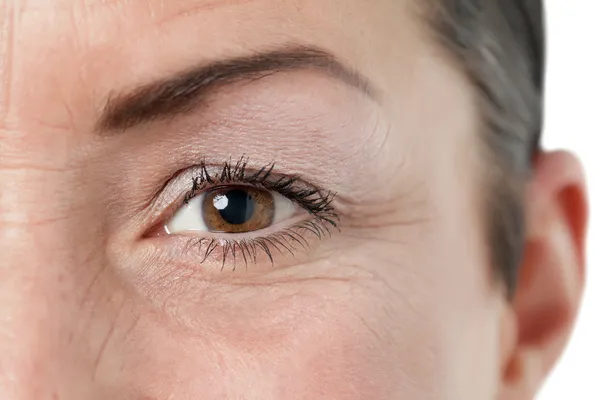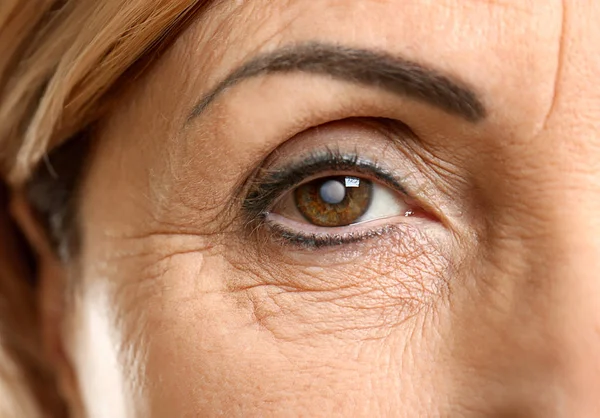Explore powerful non-surgical alternatives to eyelid surgery. Nourish your way to captivating and vibrant eyes. In the realm of aesthetic enhancements, the quest for a more youthful appearance often leads individuals to consider various alternatives to surgical procedures.
One area that garners considerable attention is the eyes, with Non-Surgical Alternatives To Eyelid Surgery emerging as a compelling option for those seeking rejuvenation without the inherent risks of going under the knife.
Understanding The Motivation
Before delving into the plethora of non-surgical alternatives available, it’s imperative to grasp the motivation behind individuals seeking to enhance their eyelids. The eyes, being a focal point of facial aesthetics, often show early signs of aging, including sagging skin and the formation of fine lines. The desire to mitigate these natural occurrences has fueled the development of innovative solutions that do not involve the complexities of surgery.

The Rise Of Non-Invasive Techniques
1. Dermal Fillers:
One prominent non-surgical alternative gaining popularity is the strategic use of dermal fillers. These injectables, often containing hyaluronic acid, work to plump and hydrate the skin around the eyes. By targeting specific areas, such as the tear troughs and crow’s feet, dermal fillers can provide a subtle lift, reducing the appearance of sagging without the need for incisions.
2. Botox Injections:
Enter the realm of neuromodulators, with Botox injections leading the charge. These injections, derived from the bacterium Clostridium botulinum, temporarily paralyze muscles responsible for wrinkles. When strategically administered around the eyes, Botox can smooth out fine lines and wrinkles, offering a non-surgical solution to the age-old quest for a more youthful gaze.
Harnessing Technology For Eyelid Rejuvenation
3. Ultherapy:
For those inclined towards cutting-edge technology, Ultherapy stands out as a non-invasive procedure utilizing ultrasound energy. This energy penetrates deep into the skin, stimulating collagen production and resulting in a natural lift. While it may not deliver immediate results, Ultherapy offers a gradual improvement in eyelid laxity, making it a preferred choice for those with patience and a commitment to long-term outcomes.
4. Radiofrequency Skin Tightening:
Employing the power of radiofrequency waves, non-surgical alternatives extend to radiofrequency skin tightening. This technique stimulates collagen and elastin production, fostering skin tightness and elasticity. By precisely targeting the eyelid area, radiofrequency treatments contribute to a more lifted appearance without the need for surgical intervention.
The Art Of Combination
5. Thread Lifts:
An intriguing approach involves the use of thread lifts. These are dissolvable threads strategically placed under the skin to lift and tighten. While not a standalone solution, combining thread lifts with other non-surgical techniques can yield a harmonious result, addressing both skin laxity and volume loss.
Considerations And Caveats
While the allure of non-surgical alternatives to eyelid surgery is undeniable, it’s essential to approach these options with realistic expectations. The efficacy of these treatments varies from person to person, and results may not be as dramatic as those achieved through surgical means. Additionally, the longevity of non-surgical procedures may necessitate periodic maintenance sessions to sustain the desired effects.
Conclusion: Navigating The Landscape Of Non-Surgical Options
In the ever-evolving landscape of cosmetic enhancements, the realm of non-surgical alternatives to eyelid surgery presents a compelling array of options.
From dermal fillers and Botox injections to advanced technologies like Ultherapy and radiofrequency skin tightening, individuals now have a diverse toolkit to address eyelid concerns without the need for invasive procedures.
As the demand for non-surgical solutions continues to grow, it is crucial to consult with qualified professionals who can tailor these treatments to individual needs.
The key lies in understanding that while non-surgical alternatives may not provide the transformative results of surgery, they offer a nuanced and low-risk path towards achieving a refreshed and revitalized appearance.
The Pros And Cons Of Non-Surgical Eye-Lift Alternatives
Non-surgical eye-lift alternatives are a popular choice for people who want to improve the appearance of their eyelids without going under the knife. These procedures are typically less invasive and have a shorter recovery time than traditional eyelid surgery. However, they may not provide the same dramatic results.
Pros of non-surgical eye-lift alternatives:
- Less invasive and downtime
- Typically less expensive than traditional eyelid surgery
- Can be used to treat a variety of conditions, including wrinkles, dark circles, and puffiness
- Can be done in a doctor’s office
- Results are typically visible within a few weeks or months
Cons of non-surgical eye-lift alternatives:
- Results are not as dramatic as traditional eyelid surgery
- May require multiple treatments to achieve desired results
- Results are not permanent
- May not be suitable for people with severe sagging skin
Types of non-surgical eye-lift alternatives:
- Botox: Botox is a neurotoxin that can be used to relax the muscles around the eyes, which can help to lift the eyebrows and reduce the appearance of wrinkles.
- Fillers: Fillers are injected into the skin to add volume and fullness. This can help to reduce the appearance of dark circles, puffiness, and wrinkles.
- Chemical peels: Chemical peels use a solution to remove the top layer of skin, which can help to improve the appearance of fine lines, wrinkles, and sun damage.
- Microneedling: Microneedling uses tiny needles to create small punctures in the skin. This can help to stimulate collagen production and improve the appearance of wrinkles, scars, and stretch marks.
- Laser resurfacing: Laser resurfacing uses laser beams to remove the top layer of skin. This can help to tighten the skin, remove wrinkles, and even out skin tone.
Who is a good candidate for non-surgical eye-lift alternatives?
Non-surgical eye-lift alternatives are a good option for people who:
- Have mild to moderate signs of aging around the eyes
- Are looking for a minimally invasive procedure
- Have a busy lifestyle and cannot take a lot of time off work
- Are not interested in traditional eyelid surgery
How much do non-surgical eye-lift alternatives cost?
The cost of non-surgical eye-lift alternatives varies depending on the type of procedure, the provider, and the geographic location. However, they are typically less expensive than traditional eyelid surgery.
What are the risks of non-surgical eye-lift alternatives?
The risks of non-surgical eye-lift alternatives are generally low. However, they may include:
- Bruising
- Swelling
- Redness
- Temporary numbness
- Infection
What is the recovery time for non-surgical eye-lift alternatives?
The recovery time for non-surgical eye-lift alternatives is typically short. Most people can return to work or school the next day. However, there may be some bruising, swelling, and redness for a few days.
How long do the results of non-surgical eye-lift alternatives last?
The results of non-surgical eye-lift alternatives typically last for 6 to 12 months. However, some people may experience results that last for up to two years.
Are non-surgical eye-lift alternatives right for you?
If you are considering non-surgical eye-lift alternatives, it is important to consult with a board-certified dermatologist or plastic surgeon to discuss your goals and expectations. They can help you determine if non-surgical eye-lift alternatives are right for you and can recommend the best treatment for your individual needs.
What Experts Say
-
Dr. Julius Few, a board-certified dermatologist in New York City, recommends chemical peels for mild to moderate signs of aging around the eyes. Chemical peels can help to improve the appearance of fine lines, wrinkles, and sun damage.
-
Dr. Neil Sadick, a board-certified plastic surgeon in New York City, recommends microneedling for patients who are looking for a minimally invasive way to improve the texture and tone of their skin. Microneedling can also help to reduce the appearance of scars and stretch marks.
-
Dr. David Shafer, a board-certified oculoplastic surgeon in Chicago, recommends Botox for patients who are looking to lift their eyebrows and reduce the appearance of crow’s feet. Botox is a neurotoxin that temporarily paralyzes muscles, which can help to smooth out the skin.
-
Dr. David Kim, a board-certified dermatologist in San Francisco, recommends fillers for patients who are looking to add volume to their eyelids and reduce the appearance of dark circles. Fillers are made of hyaluronic acid, a substance that is naturally found in the body.
-
Dr. Paul S. Tchir, a board-certified dermatologist in Miami, recommends laser resurfacing for patients who are looking for a more dramatic improvement in the appearance of their eyelids. Laser resurfacing can help to tighten the skin, remove wrinkles, and even out skin tone.
Don’t miss | How To Increase Skin Cell Turnover Naturally
Note: This article is written based on scientific evidence found by the 247newsaroundtheworld.com team. Sources are duly referenced with keywords hyperlinked to source websites and are clickable for reference.






